Ada Lovelace: Consulting Mathematician
The Lebombo Bone has been stolen!

It is the summer of 1842 and the finest mathematicians from around the world have gathered at The Archimedes' Museum of Mathematics for a grand soiree! Amidst all the merriment, a terrible crime occurs — the robbery of the priceless Lebombo Bone artefact. Evidence of the theft has been scattered across the museum grounds. Only Ada Lovelace — pioneer of the Analytical Machine and part-time sleuth — is up to the challenge of solving the crime.
Time is of the essence and she must work quickly to examine each room of the museum and assess each piece of evidence. She has only minutes before the trail goes cold...

"At 44 thousand years old, this mathematical artifact is priceless!"
In Ada Lovelace: Consulting Mathematician, you take the role of the famous computer scientist who must search the Archimedes' Museum of Mathematics for evidence before running out of time. As you find more clues, you will unlock abilities to help you in your search. You have 6 rounds, each with 6 dice, to complete your investigation.
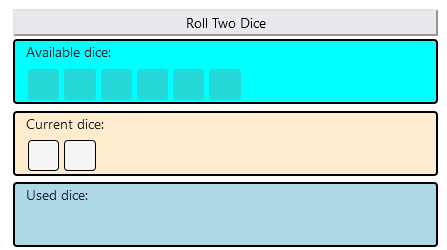
Begin your turn by pressing the "Roll Two Dice" button. This rolls 2 of your 6 available dice. Then, click each of the dice in turn and decide how to use it. Once you've used both dice, roll two more and continue like this.
How to Use Dice
Search the Museum
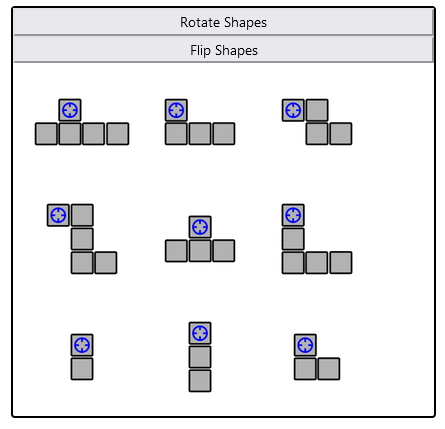
At the start of the game, the only way to use a dice is to place a polyomino on the board - this represents searching some locations in the musuem. Each dice number is associated with two main shapes and three small shapes. When you click a dice, all the associated shapes will be highlighted with a blue border. Pick a shape by clicking it, rotate and flip it as you like by pressing the relevant buttons, and place it on the board. Each shape has a target printed on it, which will help you line it up on the board
Where should you place your polyominoes? At the start of the game, your main objective is to surround pieces of evidence and completely fill rooms. Surrounding evidence provides abilities, while filling rooms earns points.
Investigate Evidence
Once you have completely surrounded a piece of evidence (including diagonal spaces), you unlock further uses for your dice.
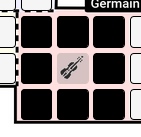
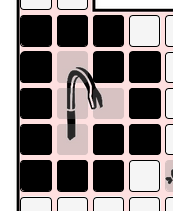
Every space, including diagonal spaces, need to be searched to unlock evidence

Once unlocked, you can put dice on the relevant ability spaces below the board, following the mathematical constraints of each ability. Once you have placed two valid dice on a piece of evidence, you unlock its ability. These abilties vary for each piece of evidence - they might let you reroll dice, place different polyomino shapes, gain more dice, etc.
Scoring
The game ends after 6 rounds. You'll score based on how thorough your investigation was.
- 2 points per surrounded piece of evidence.
- Points for each completely filled room.
- Points from completing the abilities on some pieces of evidence.
Your score will determine which ending you will get in the game. Score 80+ points for the best ending!
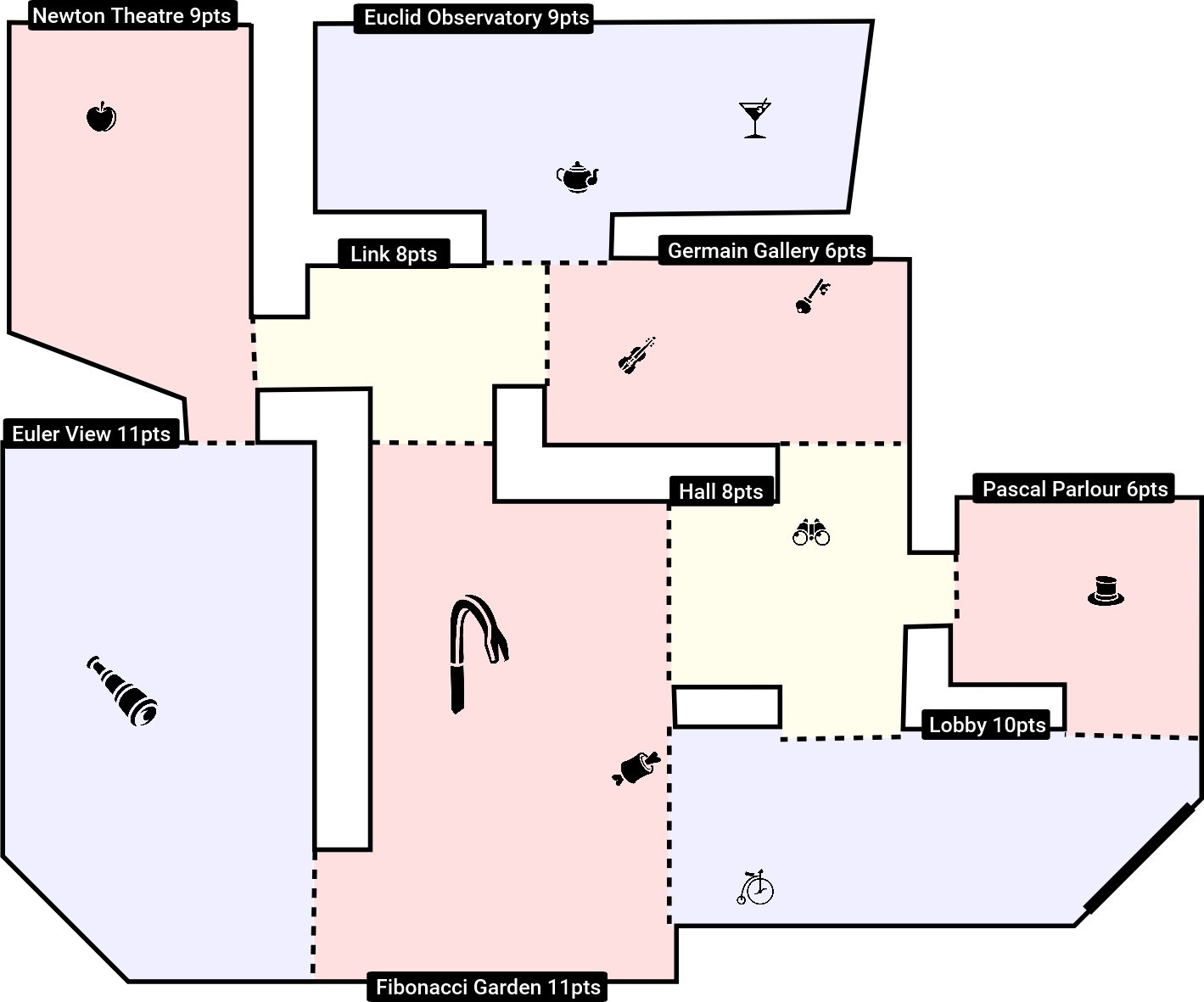
Available dice:
Current dice:
Used dice:
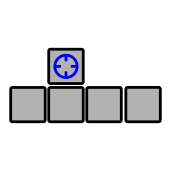
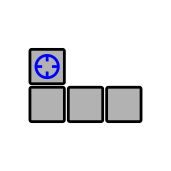
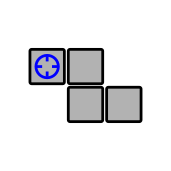
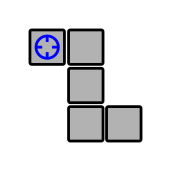
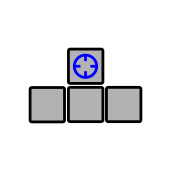
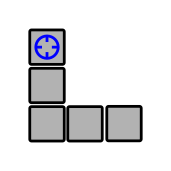
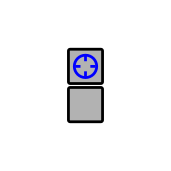
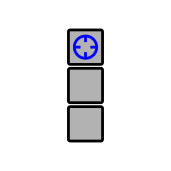
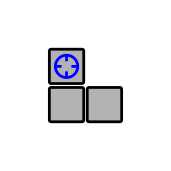
Evidence Abilities
Spend 2 dice with the same value to immediately move up to 3 dice from the used pile to the reserve pile. Also, gain 3 points at the end of the game.
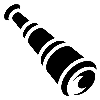
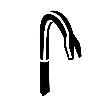
Spend 2 dice with consecutive values to gain 2 wild shapes. Use at any time.


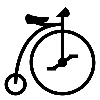
Spend 2 dice summing the indicated value to gain 4 opportunities to re-roll unused dice.


Spend 2 dice summing the indicated value to gain two shapes (sizes 3x2 and 5x1) that can be placed, once each, at any time.
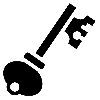

Spend 2 dice summing the indicated value to gain 7 points at the end of the game.


How to Play

It is the summer of 1842 and the finest mathematicians from around the world have gathered at The Archimedes' Museum of Mathematics for a grand soiree! Amidst all the merriment, a terrible crime occurs — the robbery of the priceless Lebombo Bone artefact. Evidence of the theft has been scattered across the museum grounds. Only Ada Lovelace — pioneer of the Analytical Machine and part-time sleuth — is up to the challenge of solving the crime.
Time is of the essence and she must work quickly to examine each room of the museum and assess each piece of evidence. She has only minutes before the trail goes cold...

"At 44 thousand years old, this mathematical artefact is priceless!"
In Ada Lovelace: Consulting Mathematician, you take the role of the famous computer scientist who must search the Archimedes' Museum of Mathematics for evidence before running out of time. As you find more clues, you will unlock abilities to help you in your search. You have 6 rounds, each with 6 dice, to complete your investigation.

Begin your turn by pressing the "Roll Two Dice" button. This rolls 2 of your 6 available dice. Then, click each of the dice in turn and decide how to use it. Once you've used both dice, roll two more and continue like this.
How to Use Dice
Search the Museum

At the start of the game, the only way to use a dice is to place a polyomino on the board - this represents searching some locations in the musuem. Each dice number is associated with two main shapes and three small shapes. When you click a dice, all the associated shapes will be highlighted with a blue border. Pick a shape by clicking it, rotate and flip it as you like by pressing the relevant buttons, and place it on the board. Each shape has a target printed on it, which will help you line it up on the board
Where should you place your polyominoes? At the start of the game, your main objective is to surround pieces of evidence and completely fill rooms. Surrounding evidence provides abilities, while filling rooms earns points.
Investigate Evidence
Once you have completely surrounded a piece of evidence (including diagonal spaces), you unlock further uses for your dice.


Every space, including diagonal spaces, need to be searched to unlock evidence

Once unlocked, you can put dice on the relevant ability spaces below the board, following the mathematical constraints of each ability. Once you have placed two valid dice on a piece of evidence, you unlock its ability. These abilties vary for each piece of evidence - they might let you reroll dice, place different polyomino shapes, gain more dice, etc.
Scoring
The game ends after 6 rounds. You'll score based on how thorough your investigation was.
- 2 points per surrounded piece of evidence.
- Points for each completely filled room.
- Points from completing the abilities on some pieces of evidence.
Your score will determine which ending you will get in the game. Score 80+ points for the best ending!
Credits
Original game design and digital implementation by Robin David
Evidence icons are from More Games by game-icons.net and released under a CC BY 3.0 licence.